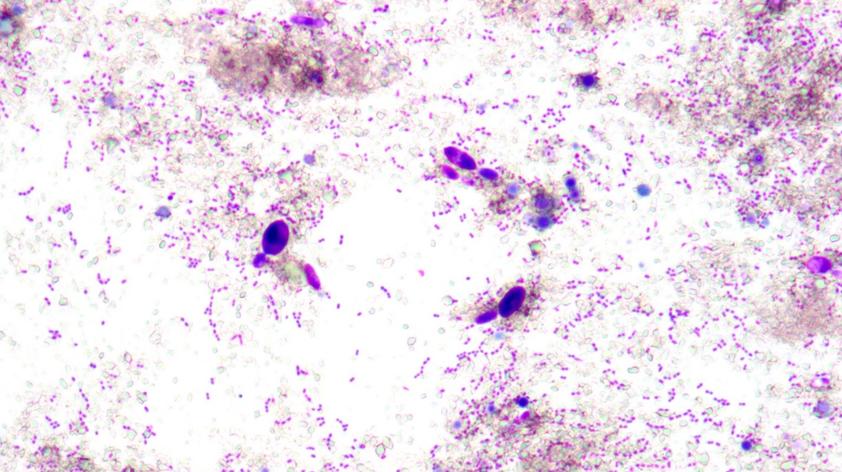
The itsy bitsy spider…got sick!
While sitting at my desk one day, I received the most unexpected call, a call I am almost certain no one has ever received before. Paige Howorth, our Curator of Invertebrates, was on the other end. She said she had something interesting that she wanted us to take a look at.
Now, it takes a lot to really surprise me.
Just to give you some perspective, I spend most of my time in the Disease Investigations lab performing necropsies (post mortem exams) on every animal that dies in our collection. I have seen and smelled things that most people cannot stomach, but the thing Paige wanted us to take a look at still managed to surprise me.
What was this mysterious thing? Tarantula vomit.
Every day we are faced with challenges in the Disease Investigations lab. While we are experts in our field, we are often confronted with mysteries that require us to dig a little deeper.
With our large collection of animals, ranging from amphibians to marsupials and birds to invertebrates, we are constantly building our knowledge about each species.
Our job is to identify abnormalities, based on our knowledge and understanding about what is normal. Often, this can be difficult when working with exotic species that are not as extensively studied. How do we know what is abnormal if we don’t know what is normal? Since no one could remember a discharge from the mouthparts of a tarantula before, this “vomit” seemed fairly abnormal. So what was going on?
We had Paige immediately bring up the sample on a small petri dish that she carefully collected from the terrarium of the female Brazilian White-knee Tarantula (Acanthoscurria geniculata). It was a tiny amount of whitish material mixed with some substrate from the enclosure. Paige confirm that she witnessed the tarantula expel this material from the region of its mouthparts and wanted to know what it was.
The tarantula had not been eating, she was moving slower, and her body condition was stable (the abdomen was not shrinking), all of which are to be expected during the pre-molt period leading to shedding of the exoskeleton.
Using a cotton swab, we smeared some of the thick white “vomit” onto a glass slide and looked at it first unstained and then stained with a Romanowski stain under a microscope.
Under high magnification, the material was finely granular, non-staining, and lit up like a Christmas tree under polarized light, a property called “birefringence.” This material is likely guanine crystals, a normal excretory material made in the tarantula’s midgut diverticula (outpouching of the midgut). Also mixed with this material were numerous oval yeasts, some of which were budding, and small bacterial cocci. Was this an infection?
It is difficult to say, although it is possible. No inflammatory cells were recognized, which would more clearly indicate an infection, and the exact source of the material could not be confirmed. Happily, the spider seems to be none the worse for expelling this material, and its cause is likely to remain a bit of a mystery!













